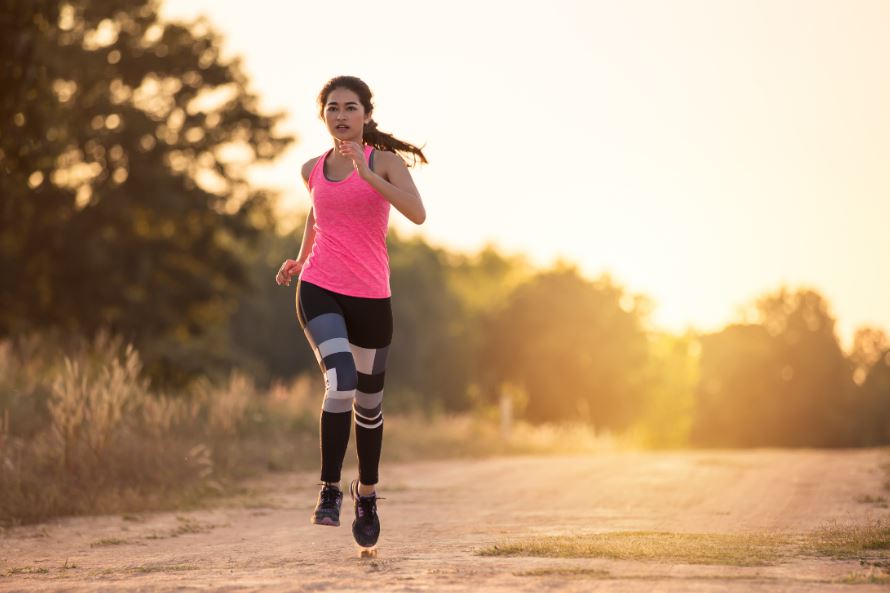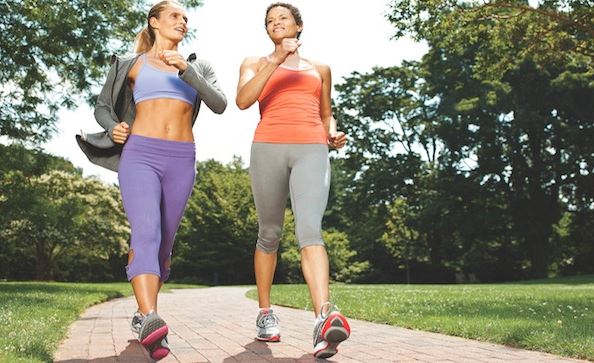The Galloway Method to Improve Your Personal Running Records

In running, there are several techniques you can use in order to improve your personal records. The Galloway method is one of the most widely-used to improve performance. Would you like to know what it is? If so, keep reading.
What is the Galloway Method?
In order to talk about the Galloway method, we must talk about its creator: Jeff Galloway. An athlete and part of the United States Olympic team, Galloway broke several running records in the 70s.
He competed against the most important runners in Europe, the former Soviet Union, and Africa. He achieved some truly amazing results. Some of his records include the American ten-mile road race record (with a time of 47.29) and the six-mile record (27:21).

Galloway also emerged victorious in the Atlanta marathon, the Peachtree race, and the Honolulu marathon. He also got on the podium at the Boston Marathon, where he made his technique known: running- walking- running. This method allowed him to win over 120 races throughout his sporting life and avoid injuries. Both in training and in competition.
How is the Galloway Method done?
This running technique combines two movements (or speeds): running and walking. For this reason, the Galloway method is ideal for amateurs or beginners. This includes individuals who do not have enough resistance or the physical condition for intense exercise.
Likewise, it is a method that can be used by elite runners or professionals. This is especially true if they have a recent injury or are not in their best shape. Possibly from having stopped competing for some time.
Although the method is very simple, there are steps to follow which must be fulfilled if you want to achieve better results. As a first step, you must warm up: walk five minutes, run two minutes and walk another five minutes. The times can vary as you continue training. You can, for example, do a three minute walk, run for five minutes, and then walk for another three minutes.
The Galloway method of running-walking-running, can be done by time or distance for a maximum of 30 minutes or 5 kilometers. The idea is that by combining different speeds, you do not demand too much from your body and can continue to train more easily.
Remember that resistance is key when you run a marathon or half marathon. If you sprint for a while and then walk very slowly for another while, it will become more difficult to start running again.
Walking in the middle of a practice run or a race is not the same as going for a breezy walk, looking at shop windows. You should walk at a fast pace, with your the arms mirroring your movement, keeping your heartbeat accelerated.
For a slower pace, you have the final stage of the exercise. When you have already completed the training and want to slow both your heart rate and your breathing.
Thanks to the Galloway method, you will achieve greater efficiency and avoid the typical pains or muscle tightening that is associated with running. Many runners choose this technique in order to avoid exhaustion or muscle overload.
It is a very useful preparation for the few days before a competition. Although you will continue training, you will not be demanding too much from your body.

Example of Galloway method training routines
The practice of this technique helps avoid injuries, fatigue, muscle pain, and demands that exceed what your body can stand.
It also gives you an idea of what your real (approximate) running time during a marathon could be. With the following simple routines, you can understand how to implement the Galloway method:
1. For marathons between 5.5-6 hours long, walk 1 minute for every 5 minutes of running
2. For marathons between 5 -5.5 hours long, walk 2 minutes for every 6 minutes of running
3. For marathons between 4.5-5 hours long, walk 2 minutes for every 7 minutes of running
4. For marathons between 4-4.5 hours long, walk 1 minute for every 8 minutes of running
5. For marathons between 3.5-4 hours long, walk 1 minute for every 1,600 meters of running
6. For marathons between 3-3.5 hours long, walk 30 seconds for every 1,600 meters of running
7. For marathons between 2.5-3 hours long, walk 20 seconds for every 1,600 meters of running
8. For marathons between 2-2.5 hours long, walk 15 seconds for every 1,600 meters of running
9. For marathons between 1.5-2 hours long, walk 10 seconds for every 1,600 meters of running
In running, there are several techniques you can use in order to improve your personal records. The Galloway method is one of the most widely-used to improve performance. Would you like to know what it is? If so, keep reading.
What is the Galloway Method?
In order to talk about the Galloway method, we must talk about its creator: Jeff Galloway. An athlete and part of the United States Olympic team, Galloway broke several running records in the 70s.
He competed against the most important runners in Europe, the former Soviet Union, and Africa. He achieved some truly amazing results. Some of his records include the American ten-mile road race record (with a time of 47.29) and the six-mile record (27:21).

Galloway also emerged victorious in the Atlanta marathon, the Peachtree race, and the Honolulu marathon. He also got on the podium at the Boston Marathon, where he made his technique known: running- walking- running. This method allowed him to win over 120 races throughout his sporting life and avoid injuries. Both in training and in competition.
How is the Galloway Method done?
This running technique combines two movements (or speeds): running and walking. For this reason, the Galloway method is ideal for amateurs or beginners. This includes individuals who do not have enough resistance or the physical condition for intense exercise.
Likewise, it is a method that can be used by elite runners or professionals. This is especially true if they have a recent injury or are not in their best shape. Possibly from having stopped competing for some time.
Although the method is very simple, there are steps to follow which must be fulfilled if you want to achieve better results. As a first step, you must warm up: walk five minutes, run two minutes and walk another five minutes. The times can vary as you continue training. You can, for example, do a three minute walk, run for five minutes, and then walk for another three minutes.
The Galloway method of running-walking-running, can be done by time or distance for a maximum of 30 minutes or 5 kilometers. The idea is that by combining different speeds, you do not demand too much from your body and can continue to train more easily.
Remember that resistance is key when you run a marathon or half marathon. If you sprint for a while and then walk very slowly for another while, it will become more difficult to start running again.
Walking in the middle of a practice run or a race is not the same as going for a breezy walk, looking at shop windows. You should walk at a fast pace, with your the arms mirroring your movement, keeping your heartbeat accelerated.
For a slower pace, you have the final stage of the exercise. When you have already completed the training and want to slow both your heart rate and your breathing.
Thanks to the Galloway method, you will achieve greater efficiency and avoid the typical pains or muscle tightening that is associated with running. Many runners choose this technique in order to avoid exhaustion or muscle overload.
It is a very useful preparation for the few days before a competition. Although you will continue training, you will not be demanding too much from your body.

Example of Galloway method training routines
The practice of this technique helps avoid injuries, fatigue, muscle pain, and demands that exceed what your body can stand.
It also gives you an idea of what your real (approximate) running time during a marathon could be. With the following simple routines, you can understand how to implement the Galloway method:
1. For marathons between 5.5-6 hours long, walk 1 minute for every 5 minutes of running
2. For marathons between 5 -5.5 hours long, walk 2 minutes for every 6 minutes of running
3. For marathons between 4.5-5 hours long, walk 2 minutes for every 7 minutes of running
4. For marathons between 4-4.5 hours long, walk 1 minute for every 8 minutes of running
5. For marathons between 3.5-4 hours long, walk 1 minute for every 1,600 meters of running
6. For marathons between 3-3.5 hours long, walk 30 seconds for every 1,600 meters of running
7. For marathons between 2.5-3 hours long, walk 20 seconds for every 1,600 meters of running
8. For marathons between 2-2.5 hours long, walk 15 seconds for every 1,600 meters of running
9. For marathons between 1.5-2 hours long, walk 10 seconds for every 1,600 meters of running
This text is provided for informational purposes only and does not replace consultation with a professional. If in doubt, consult your specialist.








